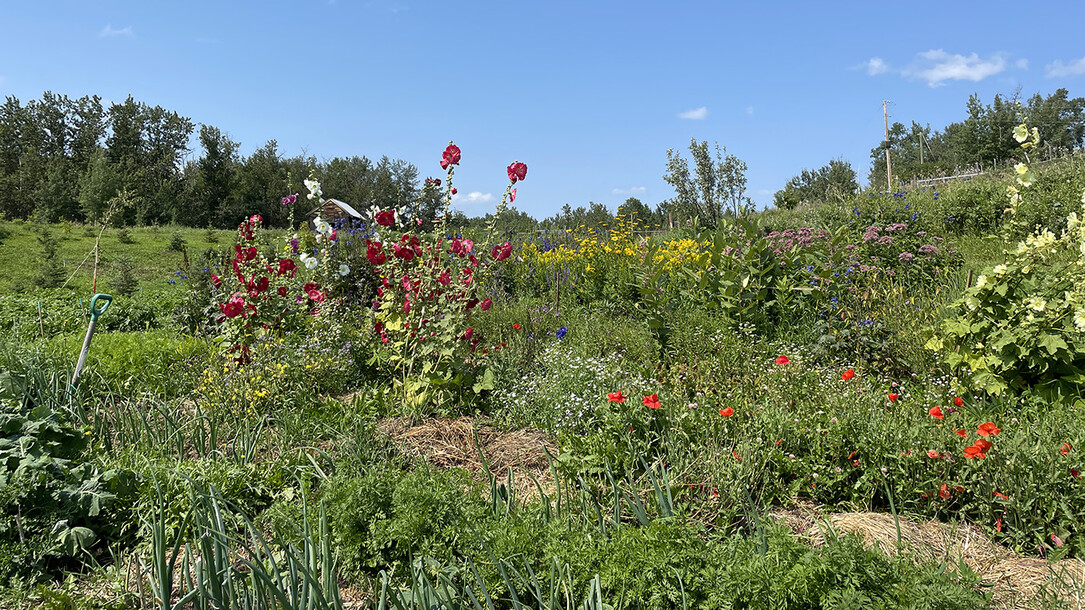The Power of Trees: Planting a Community

Over scones and rhubarb saskatoon berry jam, Lucien Royer and Judith Basisty share their passion for stewardship and the challenges they’ve overcome in reestablishing and enhancing native forest on their property in the Beaver Hills Biosphere.
Due to issues like drought, treed areas on their property have deteriorated over time. These spaces are vital for the watershed’s health and the overall biodiversity of the Biosphere. That’s where the Biosphere’s Rural Residential Stewardship Program comes in.
Launched this past April, the program offers landowners like Judith and Lucien funding to implement stewardship projects on their property. Having received Green Acreages funding from the Land Stewardship Centre in previous years, Lucien and Judith were eager to work with the Beaver Hills Biosphere too. Their acreage in Beaver County is squarely within the Biosphere, offering great opportunities to foster biodiversity and contribute to stewardship in this unique part of Alberta.
“The more we understand and work to protect the land and this watershed, the more we see how its also protecting the world,” Lucien says.
Judith adds, “We want to pay it forward. What will this place look like in 10 or 20 years? It’s important now and even more important for the future.”
With funding from the Rural Residential Stewardship Program, they’ve begun to reestablish and enhance native forest on their property. Doing so enhances and increases habitat for wildlife and biodiversity, prevents erosion and supports natural watershed function. By regenerating the forest on their acreage, creating a food forest eco-buffer also offers valuable ecosystem services. Eco-buffers mimic the natural forest with a variety of native plants that provide ecosystem services. Lucien calls it “planting a community.” Forests are more than just trees – every single plant – from yarrow to clover to berries – creates a healthier ecosystem.
Every plant plays many roles in enhancing biodiversity and restoring the land, even their vegetable garden. For example, potatoes aren’t only food – their leaves shade out thistle and encroaching grasses.
Spotting new species of birds on their property confirms their diligent planting is encouraging biodiversity. The variety of wildflowers, milkweed, golden rod and dogwood they’ve planted also attract pollinators.
“Everyone, all the bees, are hanging out here,” Lucien says proudly. “As we’ve planted different greenery, we’ve seen two new shorebirds on the property, among the many migratory birds that live there or pass through. The different plants provide food and shelter for wildlife.”
In planting a variety of native species, Judith and Lucien have not only increased the biodiversity in the Biosphere – they're also preparing their property for extreme weather events that may lie ahead, including drought and climate change. For nearly two decades Lucien was involved in the UN climate change process and decision-making. He takes the threat of climate change seriously – and it’s important to him to do his part to help mitigate it.
“The Rural Residential Stewardship Program is a humble beginning to the important project of protecting our earth,” adds Lucien.
Learn more about the Biosphere's Rural Residential Stewardship Program.
Comments